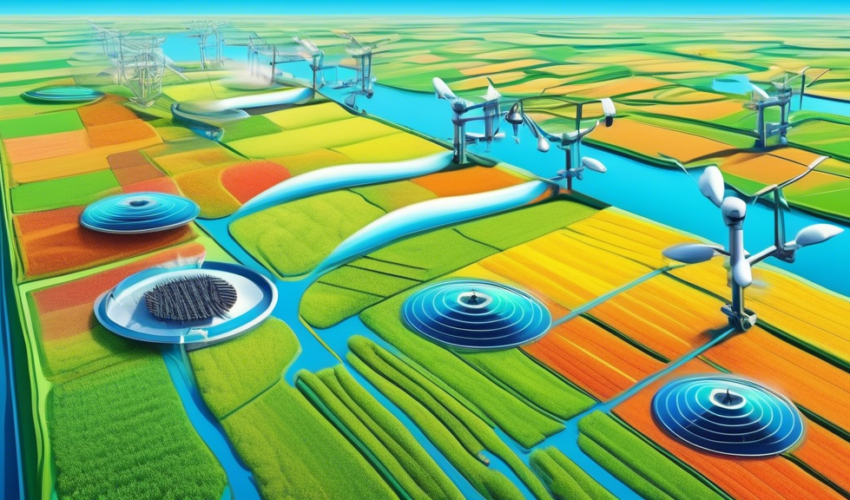Introduction to Smart Irrigation Systems
Smart irrigation systems are a technological innovation aimed at optimizing water usage and improving water management in agricultural practices. These systems utilize various sensors and devices, often integrated with software and analytical tools, to deliver the correct amount of water to crops at the right times. By doing so, smart irrigation systems help in reducing water waste, lowering costs, and enhancing crop yields, which is crucial in the face of global water scarcity and growing food demands.
Components of Smart Irrigation Systems
A typical smart irrigation system comprises several key components that work together to ensure efficient water management:
Sensors
Sensors are the cornerstone of any smart irrigation system. They collect data related to soil moisture, weather conditions, temperature, and humidity. This data is crucial for making informed watering decisions. Soil moisture sensors, for example, can precisely measure how much moisture is in the soil and determine when watering is necessary.
Controllers
Controllers serve as the brain of the irrigation system, processing data from sensors and executing the watering process. These controllers can be programmed based on specific watering schedules or can be adaptive, changing watering patterns in real-time based on sensor inputs and predefined algorithms.
Valves and Irrigation Emitters
These components are responsible for the physical delivery of water to the plants. Valves control the flow of water, while irrigation emitters, such as sprinklers and drippers, disperse water directly to the plant’s root zones.
Communication Systems
Advanced communication technologies such as Wi-Fi, Bluetooth, or cellular networks enable the components of a smart irrigation system to interact seamlessly. This connectivity also allows for remote monitoring and control, which can be managed via smartphones or computers.
Benefits of Smart Irrigation Systems
Water Conservation
By employing advanced sensors and data analytics, smart irrigation systems ensure that water is only applied where and when it is needed, significantly reducing water waste. This is especially important in regions experiencing water scarcity.
Increased Crop Yields
Proper watering can boost plant health and lead to increased yields. Smart irrigation systems provide precise water management, which supports optimal crop growth and potentially results in higher agricultural productivity.
Cost Efficiency
Reducing unnecessary water usage lowers water bills and energy costs related to water pumping systems. Moreover, labor costs are also reduced due to the automation of the irrigation processes.
Environmental Impact
Excessive irrigation can lead to nutrient leaching, runoff, and soil degradation. Smart irrigation systems mitigate these issues by applying water in a controlled manner, thereby fostering sustainable farming practices and protecting local ecosystems.
Challenges in the Implementation of Smart Irrigation Systems
Despite their advantages, the implementation of smart irrigation systems faces several challenges, including high initial costs and technological complexity. Farmers, especially in developing countries, may need assistance with installation, operation, and maintenance. Additionally, there can be concerns about the reliability and accuracy of the sensor data, which are crucial for the effective functioning of these systems.
The Future of Smart Irrigation in Agriculture
As technology advances, the next generation of smart irrigation systems is likely to become even more innovative and efficient. Integration with IoT (Internet of Things) and improvements in AI and machine learning could lead to more predictive and automated systems, tailoring irrigation practices not only to current conditions but also to forecasted environmental changes.
Moreover, as awareness about the importance of sustainable resource management grows, more farmers and agricultural businesses are expected to adopt these systems, driving further advancements and cost reductions in the sector.
Conclusion
Smart irrigation systems are revolutionizing water management in agriculture by enhancing efficiency, saving resources, and supporting sustainable practices. While there are challenges in widespread adoption, the ongoing technological advancements and increasing environmental concerns are expected to keep driving growth in the adoption of these smart systems. Ultimately, the goal is to achieve optimal agricultural productivity while minimizing environmental impact and preserving vital water resources.

